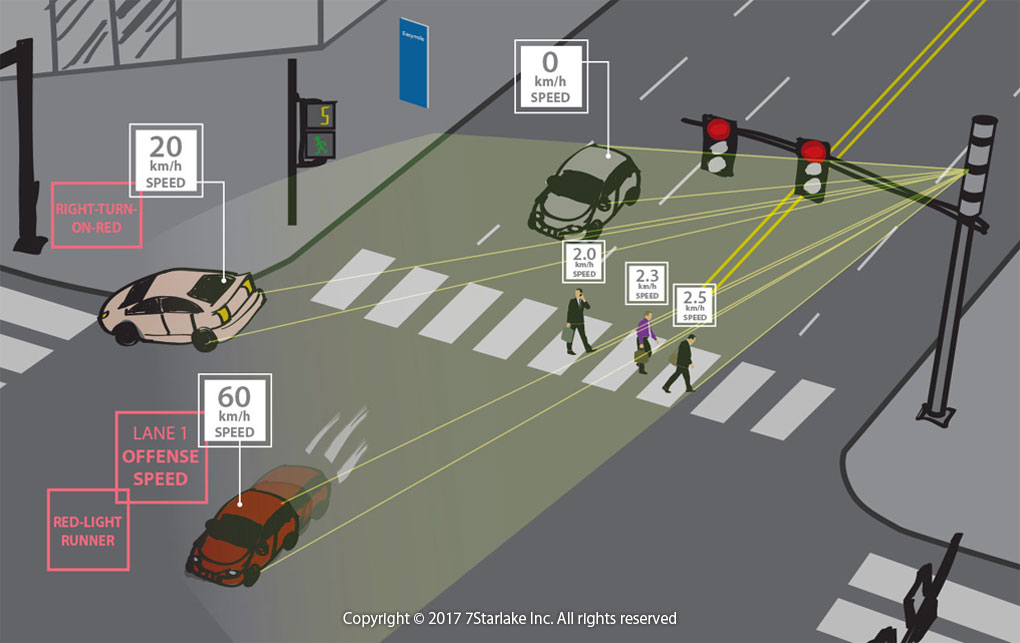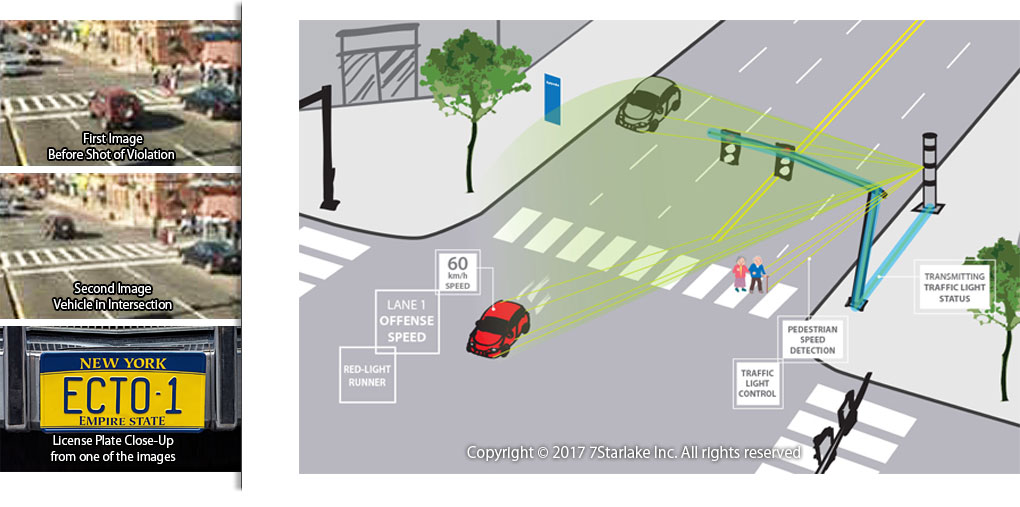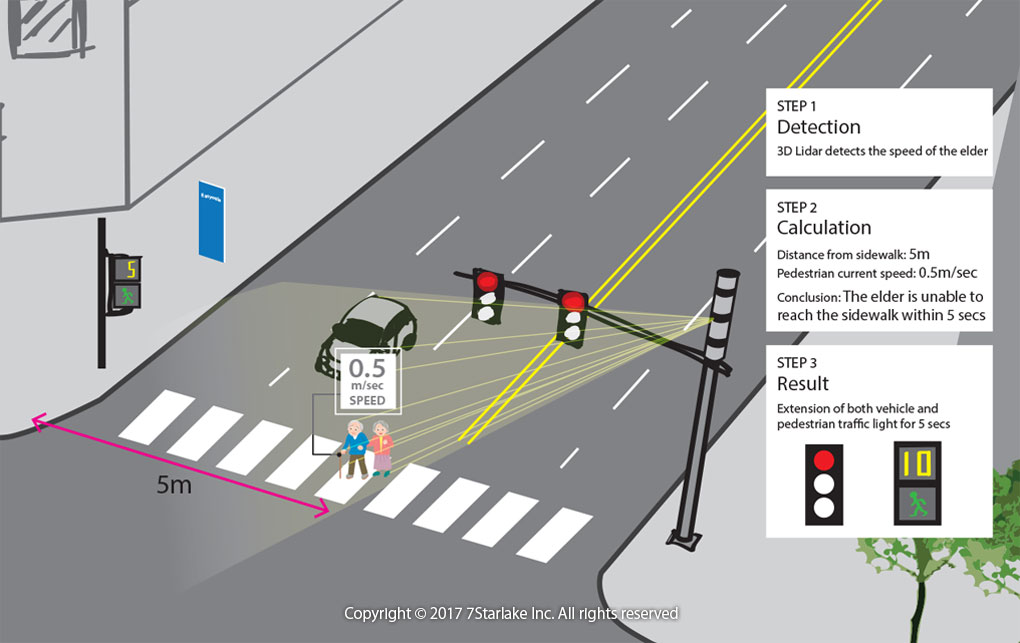
3D LIDAR Enforcement
Traffic violations, such as speed exceeding, red light runners, tailgating, changing lanes at random, resulting in dangerous traffic environment normally causes casualties. Traffic surveillance and management system has been continuously updated to ameliorate overall traffic condition. 3D LIDAR Enforcement, a gradually recognized and matured surveillance device, using lidar cameras technique to reach accurate and efficient traffic monitoring and detection.
3D lidar cameras possess three phases of superiority, traffic condition, dispute reduction, and accident analysis and identification.
Traffic Condition
- Achieve traffic flow calculation and classify vehicles across a number of lanes in both directions from a single location, even in high traffic volumes.
- Using contour detection to automatically classify vehicle types such as trucks and passenger vehicles, enabling speed enforcement identify and detect different speed limits based on vehicle class.
- Real-time vehicle velocity measurement can be executed, and even automatically report information back to control center if the speed per hour is less than the set up speed.
- Through camera trigger systems, road status and violations can be recorded, including red light runner, right-turn-on-red, traffic lane crossing or entering, intersection unclearance and double parking.
Dispute Reduction
For current banning, appeals often exist due to lacking of evidence of vehicle velocity. The installation of speed cameras, which provides relative velocity through digital video by capturing first and last speed for precise average velocity, is expected to reduce controversy.

Accident Analysis and Identification
3D lidar enforcement completes accident analysis and identification by using 3D image reconstruction system, analysis and modeling of vehicle velocity and path, cross-comparison of traffic signal, signs, and status, and combination with camera for on-site capture and restore.
Pedestrian Speed Detection
3D lidar enforcement detects the speed of pedestrian and one step further determines whether to extend the time of red light or not. This function ensures the safety of pedestrian, especially for the elder, inconvenience and children.

Lidar measuring technology detects, tracks, and clocks all vehicles on different lanes permanently and fully automatically. The surveillance system can perform outstandingly even in difficult settings such as curves and work zones. The construction work in the direct vicinity of the lane will not interfere with the measurement. Moreover, laser scanners are not affected by disrupting reflections from nearby surfaces, hence can be used safely at hazardous locations such as construction sites, tunnels, or streets with restricted visibility.
3D LIDAR Enforcement is expected to become an important solution for traffic surveillance and management system. Speed enforcement can even combine with red light enforcement to capture vehicles that run through yellow lights at dangerous high speed.